Supplier Onboarding Checklist: A Quick Guide
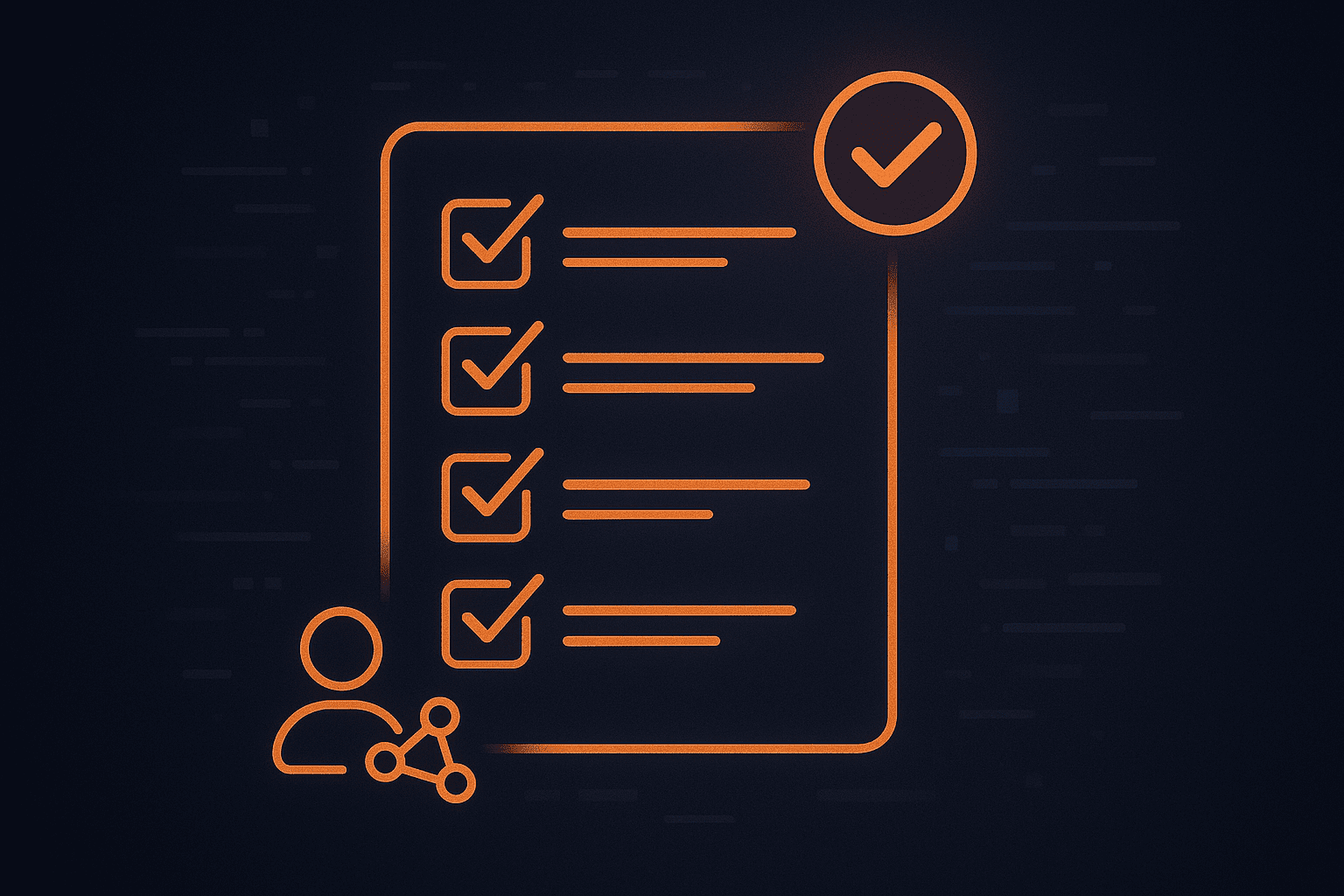

Key Takeaways:
Getting a new supplier up and running shouldn’t feel like reinventing the wheel every time.
That’s why it’s important to have a clear supplier onboarding checklist.
It streamlines the process, helps avoid costly mistakes, and lays the foundation for strong supplier relationships.
In this quick guide, we’ll show you why this checklist matters, what it should include, and how to put it into practice.
Onboarding a new supplier often spans legal, financial, and operational areas, making it easy for things to slip through the cracks.
While some think onboarding only refers to integrating a supplier into internal systems and enabling transactions, the broader process starts much earlier.
It includes everything from the moment a procurement need is identified to the moment the identified, selected, evaluated, and contracted supplier is ready to transact.
That’s why, without a clear, structured onboarding process—like a checklist—it’s easy to overlook crucial steps.
And when those steps are missed, the consequences aren’t just administrative.
They can lead to costly delays, compliance issues, or even supply chain failures, as this finding from Deloitte’s 2023 survey shows:
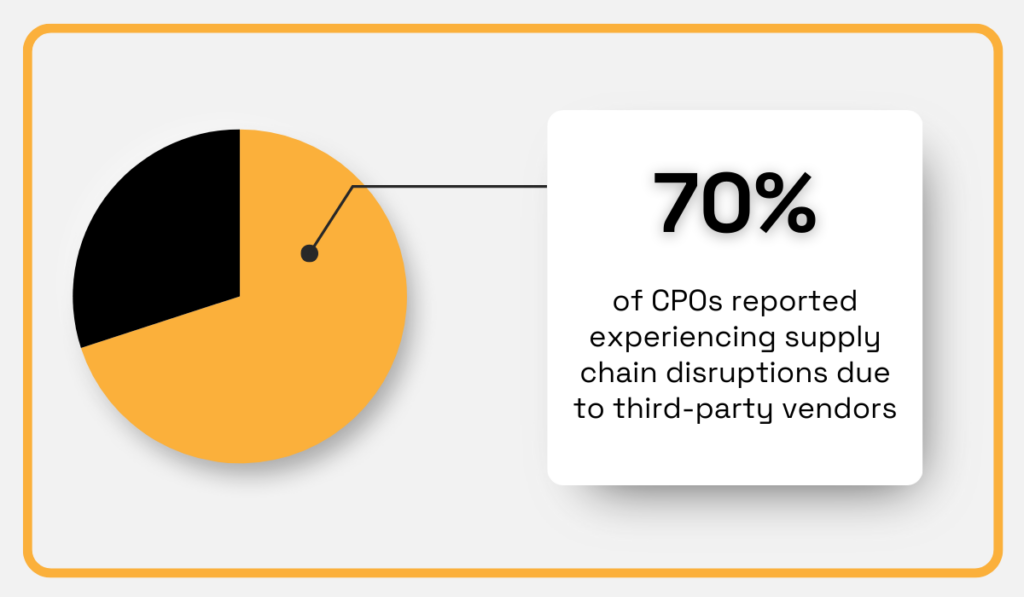
Illustration: Veridion / Data: Deloitte
This figure shows just how high the stakes can be.
While not every disruption stems from onboarding issues, many are tied to skipped background checks, unclear responsibilities, or rushed approvals.
A structured checklist is one of the simplest ways to avoid these missteps.
It brings order and consistency to a process that often varies across departments or supplier types.
To sum up, here are the key benefits of a well-structured onboarding checklist:
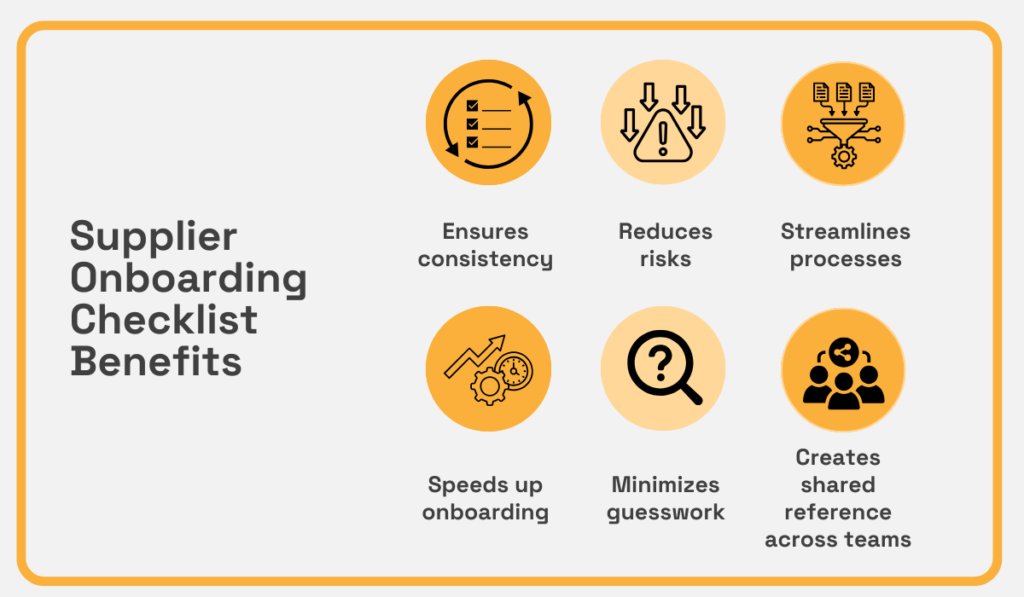
Source: Veridion
Beyond streamlining tasks and timelines, a checklist helps start supplier relationships on the right foot.
After all, onboarding is the first real interaction a supplier has with your organization.
Get it right, and you set the tone for transparency, collaboration, and long-term reliability.
A strong supplier onboarding checklist ensures you’ve vetted, aligned, and fully prepared each supplier before work begins.
Below are the essential elements your checklist should include to make that happen effectively.
Once a procurement need is defined, onboarding begins with identifying suppliers that align with your business and technical requirements.
That’s why the first item on your onboarding checklist should outline the steps, tools, and criteria used to find and screen potential vendors quickly and efficiently.
This early screening is critical as it helps filter out mismatches before time is wasted on unfit candidates.
This reduces onboarding delays and ensures a better supplier fit from the start.
Here are some sample checklist items that can help guide the supplier identification process:
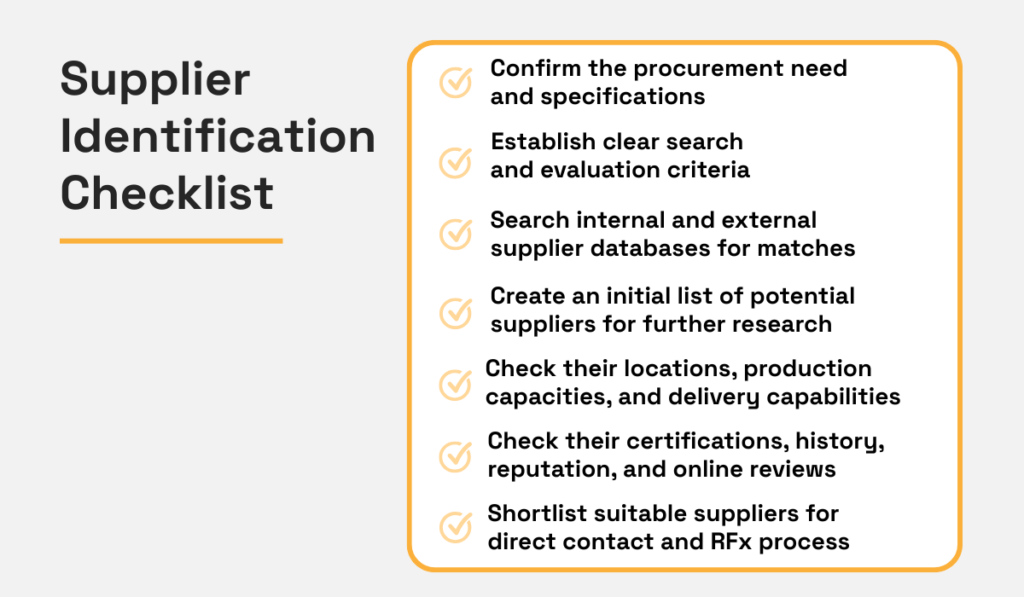
Source: Veridion
Of course, supplier discovery processes vary, so every checklist should reflect your company’s workflows, risk tolerance, and sourcing strategy.
Still, whether you’re sourcing parts, services, or raw materials, manual methods tend to make supplier identification slow and resource-heavy.
A recent TealBook study showed it can take up to five weeks on average just to compile a reliable initial list of potential suppliers.
Today, however, many of these checklist steps—searching, screening, and matching—can be completed in a single, integrated flow within hours, or even minutes.
How?
By using an AI-powered supplier data engine like our Veridion.
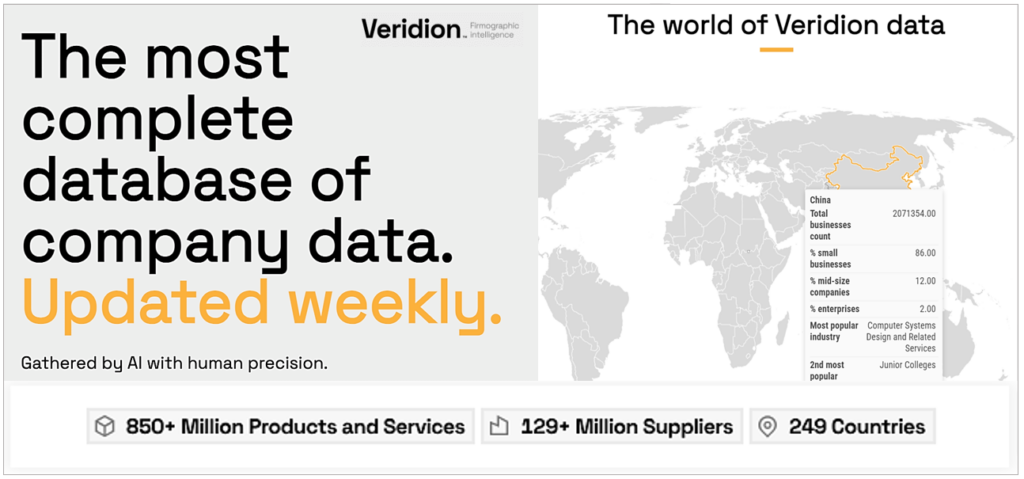
Source: Veridion
Veridion’s AI-powered algorithms continuously collect data on all companies with an active web presence, updating the database every week.
Procurement teams can use natural language to enter detailed search criteria and instantly scan the global market for suppliers that match their exact needs.
For example, this highly specific, eco-conscious, and ESG-focused search in our supplier discovery tool, Scout, returned more than 10,000 relevant companies worldwide.
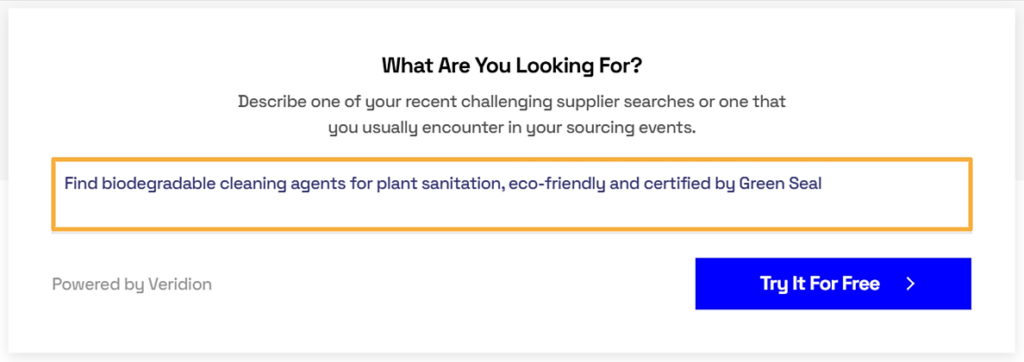
Source: Veridion
Beyond superfast supplier discovery, teams can leverage Veridion to update internal supplier databases with the latest information and automate regular updates.
This ensures that your supplier profiles stay accurate, complete, and up to date, helping reveal suitable suppliers within your existing records who may have been overlooked.
As we’ll see, services like Veridion can also streamline many other checklist steps.
After you’ve identified promising suppliers, the next step is to collect structured, verified data that supports informed decision-making.
You have to gather information from suppliers through questionnaires and RFx processes, and supplement it with insights from third-party databases.
The goal is to capture everything needed to assess a supplier’s legitimacy, financial health, operational fit, and readiness to engage with your organization.
This step lays the foundation for risk checks, contracting, and seamless future transactions.
Here’s a snapshot of the most essential data categories to cover:
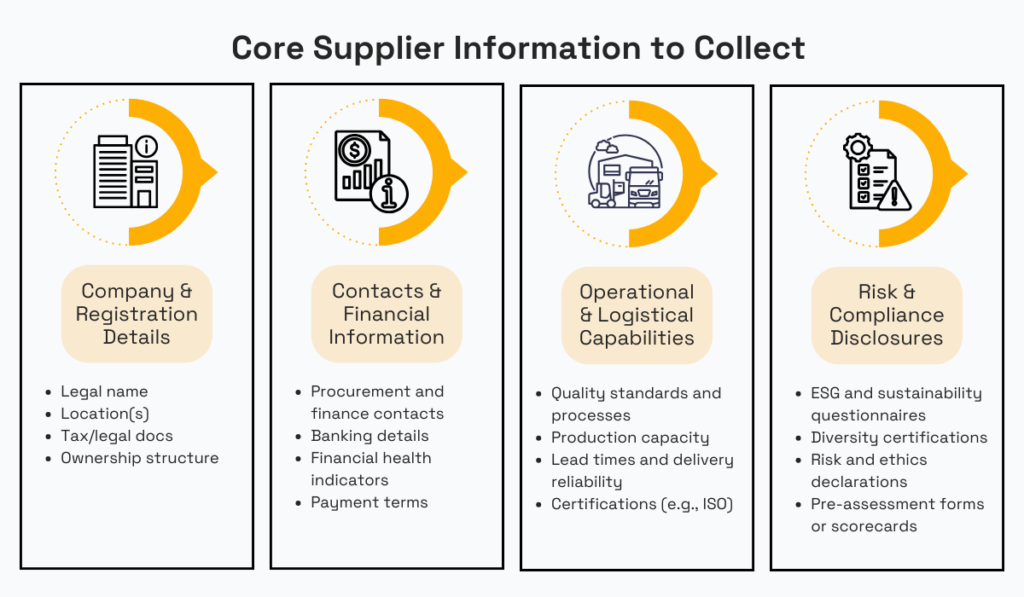
Source: Veridion
Incomplete or inaccurate data collected at this stage can significantly compromise the quality of sourcing decisions.
That’s why, as explored in the next step, external sources should be leveraged to validate the information collected from suppliers.
Additionally, third-party supplier databases can provide real-time market data to benchmark your candidates against industry standards and competitors.
Before moving to evaluation and risk assessment, it’s essential to confirm that suppliers meet all regulatory, ethical, and industry-specific standards.
This step helps prevent non-compliant or fraudulent suppliers from progressing further.
Your checklist should include verification of key details, ranging from basic company info to sustainability practices, ethical conduct, and ESG commitments.
Again, AI-powered supplier data engines can help validate a range of supplier-made claims, including in-depth ESG data points.

Source: Veridion
However, some details—such as tax registration, banking information, financial health, and certifications like ISO—usually require direct confirmation from official institutions or certifying bodies.
These should be checked through official channels or verified websites.
Once this verification is complete, you’ll have the necessary information to confidently proceed to the next step.
At this stage, you assess each shortlisted supplier’s overall risk profile and evaluate them against your operational, compliance, and strategic requirements.
Your checklist should outline the necessary steps to guide this evaluation process, ensuring a consistent and objective approach.
Risk assessment focuses on identifying red flags such as financial instability, supply chain vulnerabilities, geopolitical exposure, and reputational issues.
Supplier data platforms can streamline this process by providing real-time insights into a supplier’s business activity and market position, along with confidence scores.
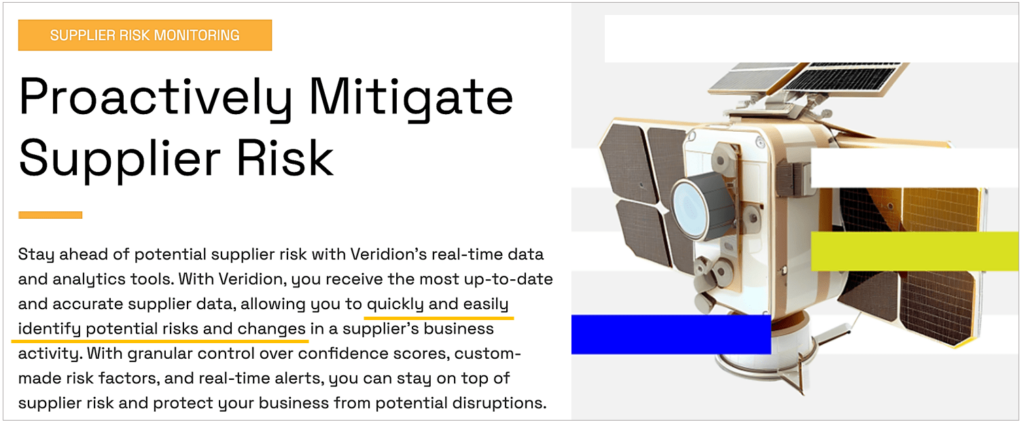
Source: Veridion
Suppliers that meet your risk criteria can then be scored and ranked using an evaluation matrix.
This typically weighs key factors like quality, cost, capabilities, and sustainability to support data-driven decision-making.
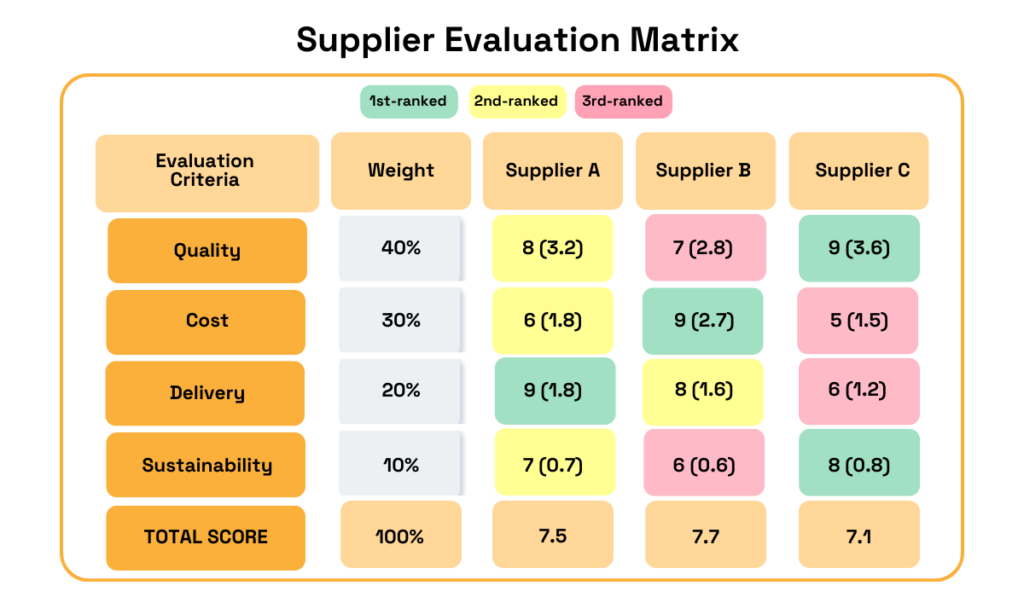
Source: Veridion
The goal is to identify the supplier that delivers the best mix of value, performance, and alignment with your company’s goals.
Ultimately, a standardized evaluation process—supported by a clear checklist—helps ensure consistency, transparency, and fairness in supplier selection.
Once a supplier is selected, the contracting phase ensures that all terms are clearly defined and mutually agreed upon.
Your checklist should guide the drafting, negotiation, and finalization of key documents, including:
Without standardization or automation, this phase can become a bottleneck—often leading to drawn-out negotiations.
As Mike O’Brien, founder and CPO of ContractAI, noted from his experience at BP, inconsistent processes can stall progress.
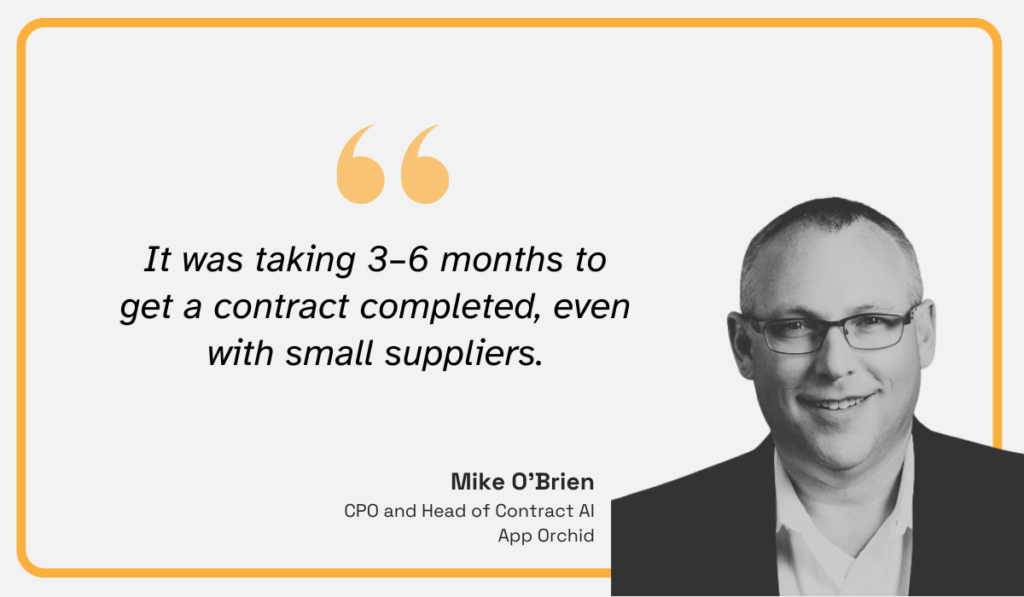
Illustration: Veridion / Quote: LinkedIn
To avoid such delays, your checklist should promote the use of standardized templates, predefined clause libraries, and clear approval workflows.
These practices accelerate contracting and minimize the risk of inconsistencies or overlooked obligations.
Digital contracting tools—especially AI-powered ones—can further streamline workflows and ensure all negotiated terms are captured accurately and consistently.
Altogether, these steps are crucial for achieving clarity and alignment with your suppliers from the outset.
This stage—along with supplier enablement—is often considered actual onboarding.
Your checklist should now cover the steps needed to integrate your new supplier into internal systems such as your ERP, procurement platform, and payment solution.
These steps include collecting clean master data, enabling EDI, assigning vendor codes, and running functionality tests before go-live.
Many of these tasks can be accelerated through a supplier self-service portal—a centralized hub where suppliers can register, enter key information, and manage communication and transactions.
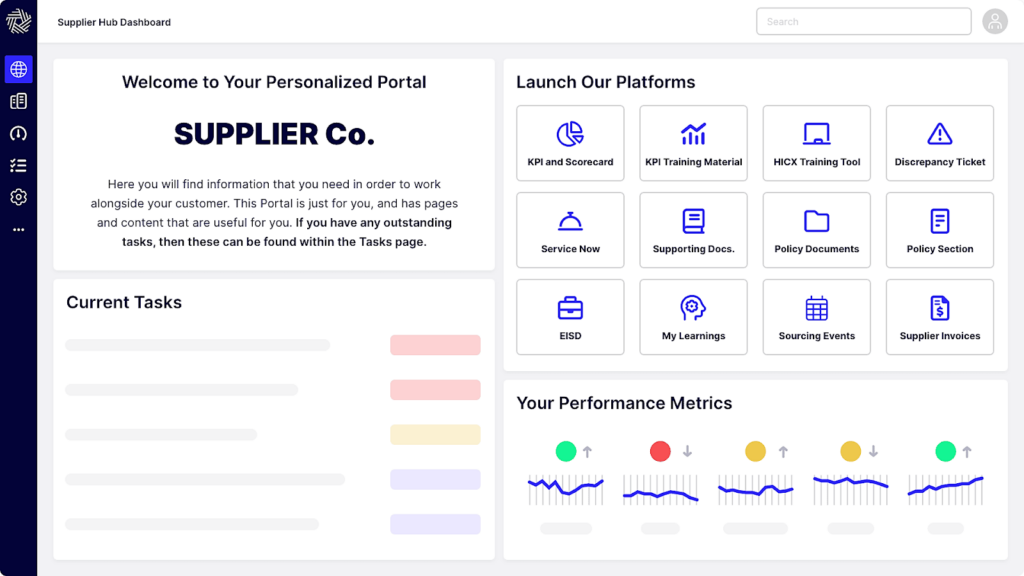
Source: HICX
If the earlier onboarding steps have been properly executed, a supplier portal can dramatically speed up system integration.
In contrast, when these processes are managed manually, through emails, spreadsheets, and disconnected systems, integration can stretch out over weeks or even months.
This is echoed by a Reddit user who commented:
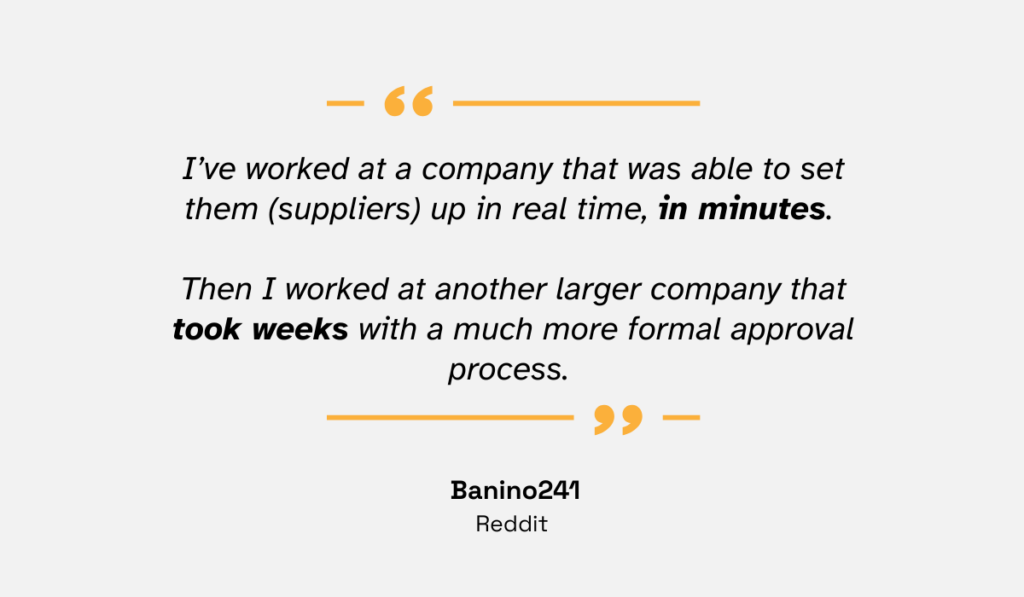
Illustration: Veridion / Quote: Reddit
Naturally, factors like contract complexity, product types, company size, risk thresholds, and system architecture also influence integration speed.
That’s why suppliers shouldn’t just be plugged into your systems—they should also be enabled to use them effectively.
Even with a self-service portal and streamlined system integration, newly onboarded suppliers still need guidance on expectations, systems, and workflows.
A checklist with clear steps for training and support helps improve one of the most critical factors for successful collaboration: communication.
This need was highlighted in HICX’s 2024 Voice of the Supplier study.
While nearly all suppliers said their customers should improve communication, the other two top findings also point to poor onboarding experiences.
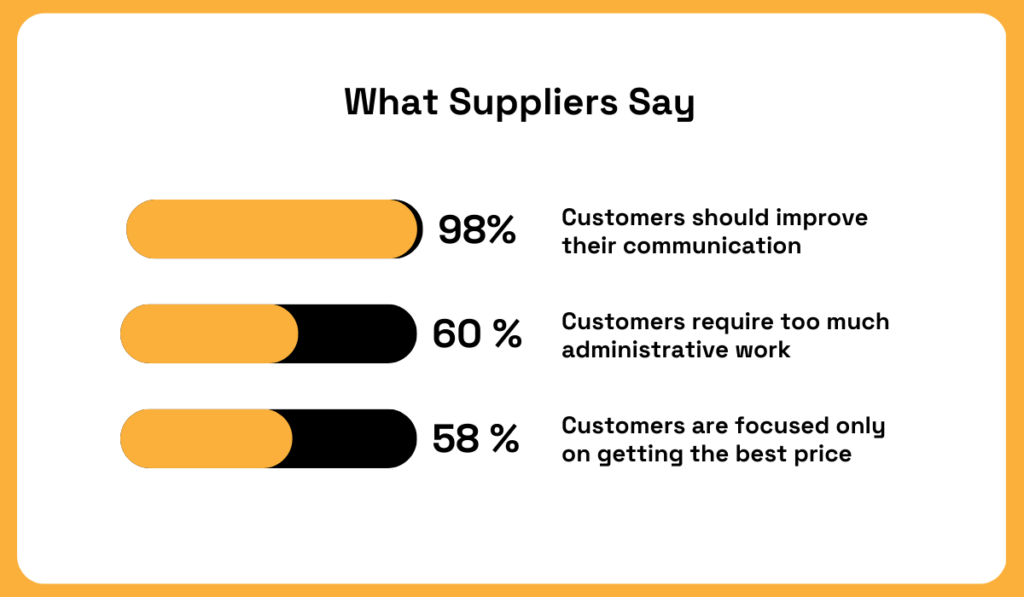
Illustration. Veridion / Data: HICX
That’s why, beyond respectful and consistent communication, providing training, resources, and guidance is essential to help suppliers navigate your systems and expectations.
Leaving a supplier unsure about what to do after receiving a purchase order—or any other instruction—is a recipe for delays, misalignment, and frustration.
Equally important is aligning internal teams—procurement, legal, finance, IT, and others—so roles are clear and support is consistent.
That internal clarity is what truly enables suppliers to succeed from day one.
Now that we’ve covered the key checklist elements, let’s explore a few best practices to streamline onboarding even further.
Throughout this article, we’ve highlighted key onboarding principles:
But to truly streamline onboarding, a few additional best practices make a big difference.
Start by establishing a centralized supplier database—regularly updated with data from both internal systems and external sources.
Once in place, this database becomes the foundation for automating the entire onboarding journey.
You can then integrate supplier discovery, e-sourcing, and onboarding tools directly into your tech stack.
For example, Veridion enables rapid supplier discovery and delivers real-time market intelligence, while Market Dojo handles sourcing and onboarding automation.

Source: Market Dojo
Together, these tools can significantly reduce onboarding costs.
According to Epiq, manual, high-touch processes can cost up to $35,000 per supplier, while streamlined systems bring that down to as little as $2,400.
Automation can also cut onboarding time by as much as 80%.
Self-service supplier portals further boost both onboarding speed and long-term performance management.
Finally, consider maintaining a list of pre-vetted suppliers to enable fast onboarding in emergencies or during urgent sourcing needs.
Supplier onboarding isn’t just paperwork and system setup.
It’s your first chance to set the tone for a productive, long-term relationship.
Done right, it speeds up time to value, cuts costs, and reduces the risk of costly mistakes down the line.
But that only happens when onboarding is treated as a strategic process, not an afterthought.
With a clear, step-by-step checklist, smart automation tools, and strong internal alignment, you can turn onboarding from a bottleneck into a competitive edge.
The faster your suppliers are up and running—and fully enabled—the faster you can focus on what really matters: delivering results.